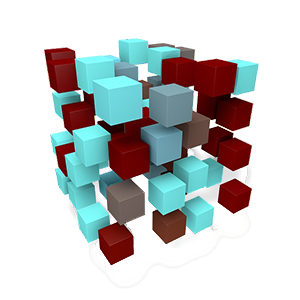Project
The current energy system poses challenges that affect every agent involved in energy management and efficiency process: the optimization of energetic resources and the reduction of costs associated with energy consumption. The achievement of these objectives is mainly based in the progresses in industrial systems of production and distribution of energy.
Nowadays, an efficient management of energetic resources implies knowing the operation of processes that sets the energy system from acquisition and analysis of available data of the operation in its different scopes (production, distribution, consume).
A proper analysis of these data will allow creating models of energy systems’ operation, with the purpose of analyzing its behavior and make decisions that help to improve its efficiency.
 Information and communication technologies allow to approach the analysis of massive volumes of data, acquired from many sources in reasonable time, to produce recommendations and to adapt the behaviors of the systems and the people, supporting an efficient and eco-friendly exploitation of the energy. The analysis of energy data is fundamental to comprehend how and where the energy is used, which are the costs, the performance of the equipment and the buildings where they are, and the urban environment.
Information and communication technologies allow to approach the analysis of massive volumes of data, acquired from many sources in reasonable time, to produce recommendations and to adapt the behaviors of the systems and the people, supporting an efficient and eco-friendly exploitation of the energy. The analysis of energy data is fundamental to comprehend how and where the energy is used, which are the costs, the performance of the equipment and the buildings where they are, and the urban environment.
To keep reliable and continuous data is a necessary condition to be able to analyze them and extract conclusions that allow the different actors involved – users, technicians, companies, suppliers, manufactories and installers – to take measures that aim to reduce energy consume and optimize the performance in each scope of responsibility. Even more, the integration of energy data – acquired from different sources and scopes – with other types of data – economics, climatic, social – enormously amplifies the possibilities of analysis and favors to comprehend and analyze the complexity of factors that affect the consumption of energy.
The creation of these energy models based on the integration of data from multiple sources proposes technological and business challenges.
From a technology perspective, it is necessary to guarantee a continuous access to these data and the reliability of them. This will allow to model them through semantic technologies, facilitating the access to sources and the intelligibility of their contents by many users. Finally, applying analytics tools (data analytics, reasoning and learning) to the data semantically available will allow the development and exploitation of services based in its application by third parties.
From a business perspective, it is about identifying the necessities from the different actors implied in processes (like production, management and consume of energy), to hold qualified information, and to ease it through services adapted to their needs. The development, implementation and exploitation of these services require creating new business models, nonexistent at this time.
Objectives of the project
The purpose of SENERSIS is the integration of energy data from multiple sources for their later exploitation by companies and organizations – public institutions, city halls, energy consultancies, professional organizations, providers of systems, equipment and tools – involved in the energy optimization in buildings.
Particularly, SENERSIS will allow the different users’ profiles to:
 Achieve greater energy efficiency, through the improvement of installations, operation of equipment and the use of buildings.
Achieve greater energy efficiency, through the improvement of installations, operation of equipment and the use of buildings. Better monitoring of the consume so it is possible to benefit of the energy supplied at moments with lower demand.
Better monitoring of the consume so it is possible to benefit of the energy supplied at moments with lower demand. Achieve a green consume. being able to consume energy when the combination of its sources has less impact on the environment.
Achieve a green consume. being able to consume energy when the combination of its sources has less impact on the environment. Encourage the responsible for maintaining and managing buildings to reduce their energy use, providing to them patterns of reference that would guarantee comparison of consume.
Encourage the responsible for maintaining and managing buildings to reduce their energy use, providing to them patterns of reference that would guarantee comparison of consume. Encourage distributors and manufactures to offer value added services based in the integration of data analysis with simulations and projections of the operation of installations.
Encourage distributors and manufactures to offer value added services based in the integration of data analysis with simulations and projections of the operation of installations.Innovation
From a technology point of view, main innovation of the project consists in applying semantic technologies to integrate energy data from multiple sources and analyze them jointly, through services specially adapted to the needs of the different final users.
From a business point of view, the innovation resides in easing the creation and exploitation of new energy services offered by the platform.
This will help companies increasing their act capacity in the energy scope, and will allow them to improve the service that they offer currently.
